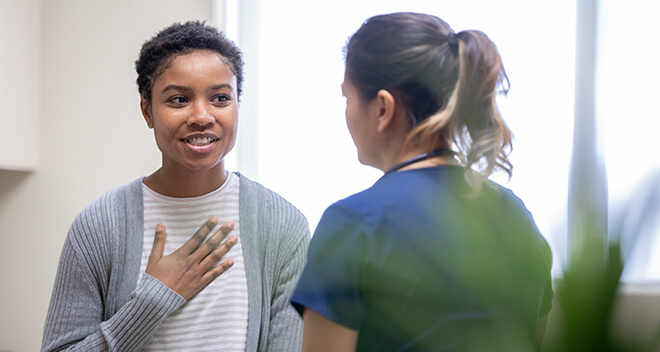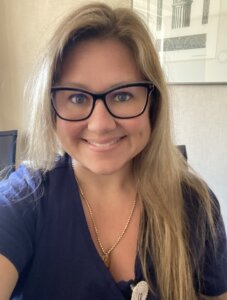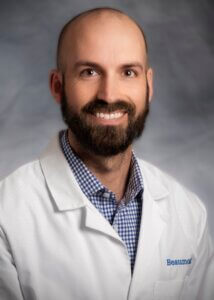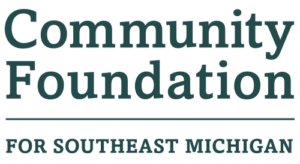

Tiffany Morelli, Emergency Center Registered Nurse and Opioid Use Disorder Program Manager at Corewell Health Beaumont Troy Hospital
Passion is at the core of many health systems’ drive to develop medication for opioid use disorder (MOUD) programs in their emergency departments (ED). With the number of opiate-related deaths continuing to rise, numerous providers and their families have been touched by the epidemic, resulting in a strong desire to normalize quality care. Tiffany Morelli, Emergency Center Registered Nurse and Opioid Use Disorder Program Manager at Corewell Health Beaumont Troy Hospital, is familiar with this reality.
“I worked with a patient in 2017 who presented to the emergency room that had overdosed on heroin,” Morelli recalls. “I connected with her and provided her with the resources to begin her journey in recovery.” The young woman called Morelli the following day, launching a long-term relationship with the nurse acting as her support system and champion. “My husband and I welcomed the patient’s two children into our home while she worked on her recovery. It’s hard for a parent to focus on their recovery when they don’t have resources to help with their children,” says Morelli. “Here we are years later, and she is still in recovery doing well with her kids back home. I’m so happy for her and proud of her.” Morelli’s motivation to work with this growing patient population was solidified when, a year later, she lost her brother to an overdose after he became addicted to narcotics following surgery.
Morelli’s interactions with those suffering from opioid use disorder (OUD) proved prophetic. She started what she describes as a “grassroots” initiative within the ED to connect patients in overdose or withdrawal to continued care. Corewell Health (formerly Beaumont) received a grant from the Community Foundation for Southeast Michigan’s Michigan Opioid Partnership (MOP) for an initiative within the ED that provides guidance, education, and resources to OUD patients. The program began at the Royal Oak campus and expanded to the Troy campus a year later, enabling Morelli to formalize her work. “With support and guidance from the emergency center nursing director and the chief nursing and medical officer, I created a program for Troy’s emergency center in partnership with Royal Oak,” Morelli explains.
ED Staff Reinforce Ongoing Care

Becky Gomez, a registered nurse specializing in addiction, left, and Dr. Michael Gratson, an emergency physician and medical director for the Royal Oak MOUD initiative
As an early adopter of MOUD and one of the first MOP grantee partners, the Royal Oak ED had an established practice of treating OUD patients with medication. Becky Gomez, a registered nurse specializing in addiction, shares, “The grant dollars allowed us to enhance the continued care protocols. We have a team composed of the nursing director and care coordinators.” Another essential team member is Dr. Michael Gratson, an emergency physician and medical director for the Royal Oak MOUD initiative. “Dr. Gratson is a mentor and champion who was instrumental in developing the program,” says Gomez. He is also leading MOUD efforts at Corewell sites throughout southeast Michigan.
Gomez shares Morelli’s passion for OUD patients. “Everyone has a right to get better,” she declares. “I often cry when I see how these patients are stigmatized. I don’t understand treating people with such disdain.”

Dr. Trevor Eckenswiller, an emergency physician and medical director for the MOUD program in Troy
Given the proximity of the Troy and Royal Oak campuses, the respective EDs often see the same patients. Morelli and Gomez collaborated to design a warm handoff process that both hospitals could institute. Dr. Trevor Eckenswiller, an emergency physician, joined them as the medical director for the MOUD program in Troy.
“Beaumont has been on the frontline of intervening with medications for people who suffer from addiction and substance use disorder,” he observes. “I don’t know that we’ve done a great job identifying and getting the social and outpatient help for them, and that needs to become mainstream in providing medical attention to all patients.”
Having relatives with OUD, Eckenswiller’s compassion for the effect on people close to the patient drew him to the work. “Witnessing this disease’s impact on families who come through the emergency department can be devastating.”
Another program goal is to ensure patients treated by the multidisciplinary team do not experience withdrawal symptoms and receive proper resources to bridge care to an outpatient setting. “We spend time with them in the hospital and release them with referrals to community partners who can help manage their addiction. We also follow up to support them,” according to Morelli. Beyond ongoing treatment, several of these partners offer transportation, job placement, and other services essential to patients’ needs. Families Against Narcotics (FAN), Dynamic Healthcare, Gammons Medical, Judson Center, Bicycle Health, AccessPoint, and Beaumont Troy Family Medicine & Substance Use Disorder Clinic are among the local resources included in both hospitals’ referral networks.
Overcoming Barriers to Deliver Patient Success
The collaborative nature of the relationship has helped each hospital acknowledge its unique cultural dynamics and bypass roadblocks.
“We are slowly changing the narrative, but bias and stigma persist,” says Gomez. “We need to reinforce education about OUD being a disease.”
Dr. Eckenswiller noted that additional MOUD training is needed. “Prescribing or administering buprenorphine isn’t familiar to a lot of providers, and unfamiliar drugs and treatments create barriers,” he says. He pointed to the necessity of an X-waiver to prescribe buprenorphine as another significant obstacle. He was highly supportive of President Biden’s December 29, 2022 decision to sign a multi-part end-of-year appropriations bill that included the bipartisan Mainstreaming Addiction Treatment (MAT) Act. The MAT Act removes the X-waiver requirement, making it possible for all practitioners with a current DEA registration that includes Schedule III authority to prescribe buprenorphine if permitted by state law. “Getting people X-waivered has been a huge challenge. Hopefully, now we can expand the number of providers prescribing medication for overuse disorder.”
In addition to education, communicating about patient success is another effective tool for building buy-in and changing minds. Both hospitals see a broad spectrum of patients and define victories relative to where they are on the continuum. Gomez considers all her patients successful because it is all about seed planting. “The length of a person’s sobriety isn’t always the best measure of success,” she says. “If a patient leaves the hospital knowing they have somebody they can call who won’t judge them and help them in any way possible, that’s a win.”
Dr. Eckenswiller echoes Gomez’s thoughts, recognizing that some people might not be ready to abstain but at least accept they have a problem. The program also benefits the hospital, according to Morelli.
“Not only can we provide the care these patients deserve, but we are reducing repeat visits and shortening lengths of stay,” she says. “Also, we are here for those not yet ready to enter recovery. We provide support, education, harm reduction resources, supplies, and follow-up,” Morelli explains.
While the partners at the Royal Oak and Troy sites acknowledge their work is relentless and demanding, their enthusiasm is undeniable. “What motivates me is meeting a patient who’s decided they want help and knowing that we can get them the help they need,” says Dr. Eckenswiller. He is also inspired by being a sounding board for patients’ families and witnessing his colleagues alter their mindsets and accept OUD as a disease worthy of treatment.
People are also at the center of Gomez and Morelli’s passion for their work. Gomez fondly describes her relationship with an OUD patient she helped get into treatment. “One of my patients calls just to say hi, and I love him. He’s been in recovery since last April, and it’s awesome. His story is awesome!”
Beyond linking people with OUD to quality care, Morelli wants to spare families the pain she experienced after losing her brother to an overdose. “We have changed the lives of so many people and their families,” she exclaims. “I’m blessed to be part of this mission.”
